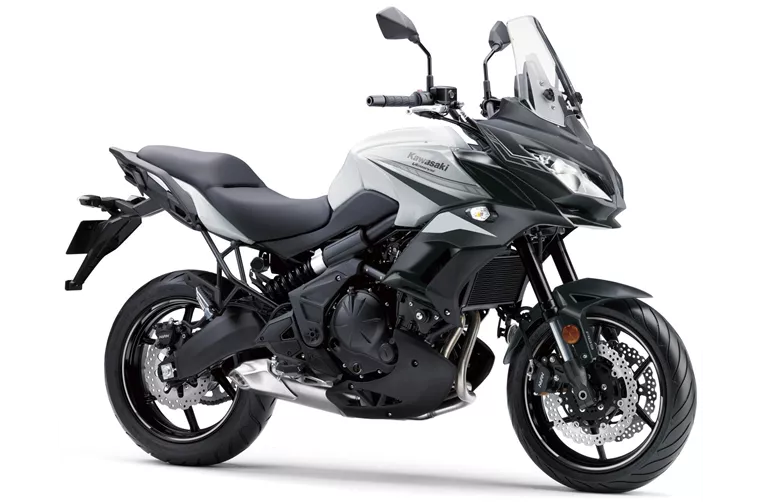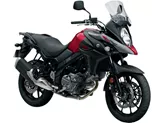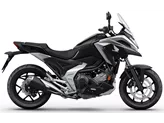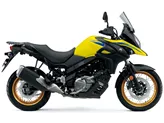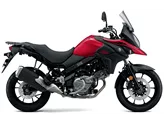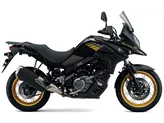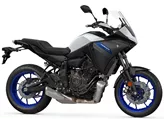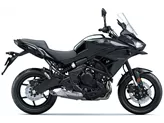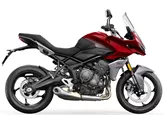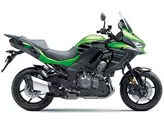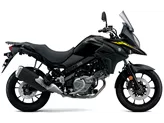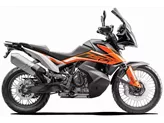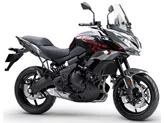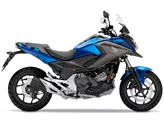Suzuki V-Strom 650 2017 vs. Kawasaki Versys 650 2020

Suzuki V-Strom 650 2017
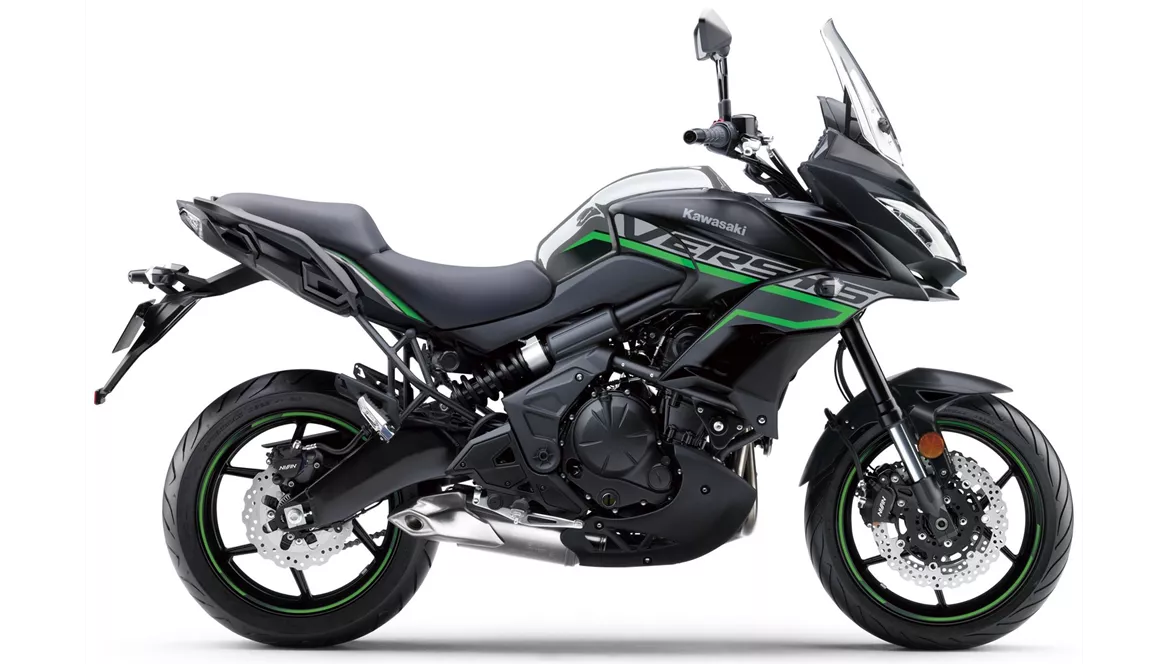
Kawasaki Versys 650 2020
Overview - Suzuki V-Strom 650 2017 vs Kawasaki Versys 650 2020
When comparing the Suzuki V-Strom 650 2017 and the Kawasaki Versys 650 2020, there are several factors to consider.
In terms of the engine and drive train, both motorcycles have a 2-cylinder engine with similar displacements. The V-Strom has a V-type engine with a bore of 81 mm and a stroke of 62.6 mm, while the Versys has an in-line engine with a slightly larger bore of 83 mm and a shorter stroke of 60 mm. The V-Strom has a slightly higher engine power of 71 HP compared to the Versys' 69 HP, but the Versys has a slightly higher torque of 64 Nm compared to the V-Strom's 62 Nm. Both motorcycles have electric starters and chain transmissions.
In terms of suspension, the V-Strom has a telescopic fork front suspension with preload adjustment, while the Versys has an upside-down telescopic fork front suspension with rebound adjustment. Both motorcycles have preload adjustment for the rear suspension, but the Versys also has rebound adjustment.

Suzuki V-Strom 650 2017
In terms of chassis, the V-Strom has an aluminum frame, while the Versys has a steel frame. This may affect the overall weight and handling of the motorcycles.
Both motorcycles have double disk front brakes, providing strong stopping power.
In terms of dimensions and weights, there are some differences between the two motorcycles. The V-Strom has a larger front tire diameter of 19 inches compared to the Versys' 17 inches. The rear tire width is also slightly wider on the Versys at 160 mm compared to the V-Strom's 150 mm. The V-Strom has a longer wheelbase of 1560 mm compared to the Versys' 1415 mm. The seat height is slightly higher on the Versys at 840 mm compared to the V-Strom's 830 mm. The kerb weight with ABS is slightly higher on the Versys at 216 kg compared to the V-Strom's 213 kg. Both motorcycles have similar fuel tank capacities, with the Versys having a slightly larger capacity of 21 liters compared to the V-Strom's 20 liters.
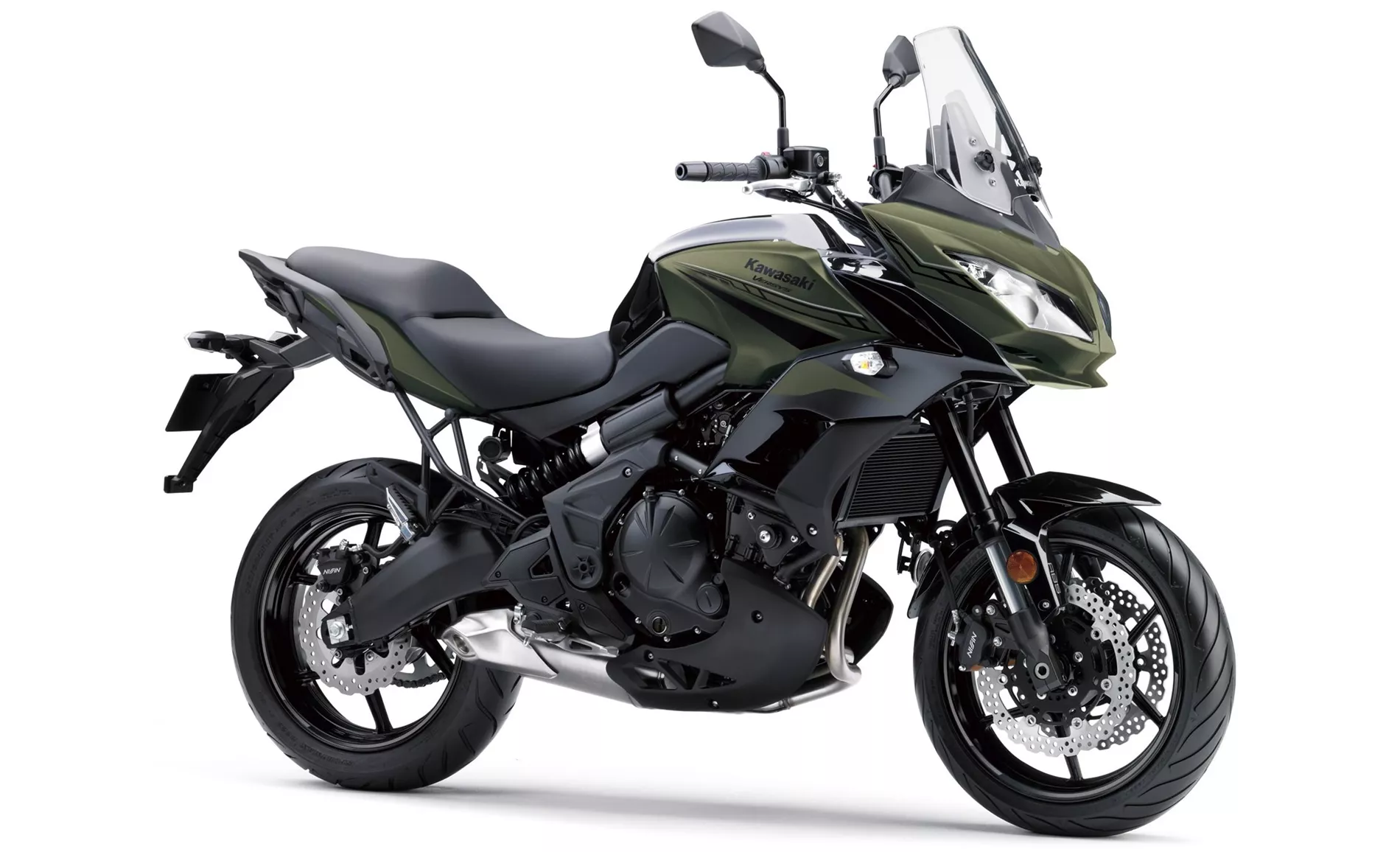
Kawasaki Versys 650 2020
In terms of strengths, the V-Strom 650 2017 has a lively and economical engine, balanced handling, good wind protection, traction control and ABS as standard, and a good price. The Versys 650 2020 has great travel comfort, a pleasant and comfortable chassis, an easy-to-use design, a seating position ready for touring, and agile and light-footed handling.
In terms of weaknesses, the V-Strom 650 2017 has a restrictive traction control in mode 2. The Versys 650 2020 has vibrations in the footpegs, response behavior during the transition from pushing and load operation, an ABS that cannot be deactivated, and a somewhat higher weight.
Overall, both the Suzuki V-Strom 650 2017 and the Kawasaki Versys 650 2020 have their own strengths and weaknesses. The V-Strom may appeal to riders looking for a lively and economical engine with good wind protection, while the Versys may appeal to riders looking for great travel comfort and an easy-to-use design. Ultimately, the choice between the two motorcycles will depend on the rider's preferences and priorities.
Technical Specifications Suzuki V-Strom 650 2017 compared to Kawasaki Versys 650 2020
Pros and Cons in comparison
Pros and Cons in comparison
Suzuki V-Strom 650 2017

The small V-Strom 650 is not only visually close to the big V-Strom 1000 with its pronounced duckbill, stacked headlights and extensive instruments. The equipment does not correspond at all to what is understood by "cheap entry": traction control, lively Euro4 engine, harmonious handling and additional techno-gadgets such as Low RPM Assist or Suzuki Easy Start System. To the delight of the customers, the price is kept within reasonable limits.
Kawasaki Versys 650 2020
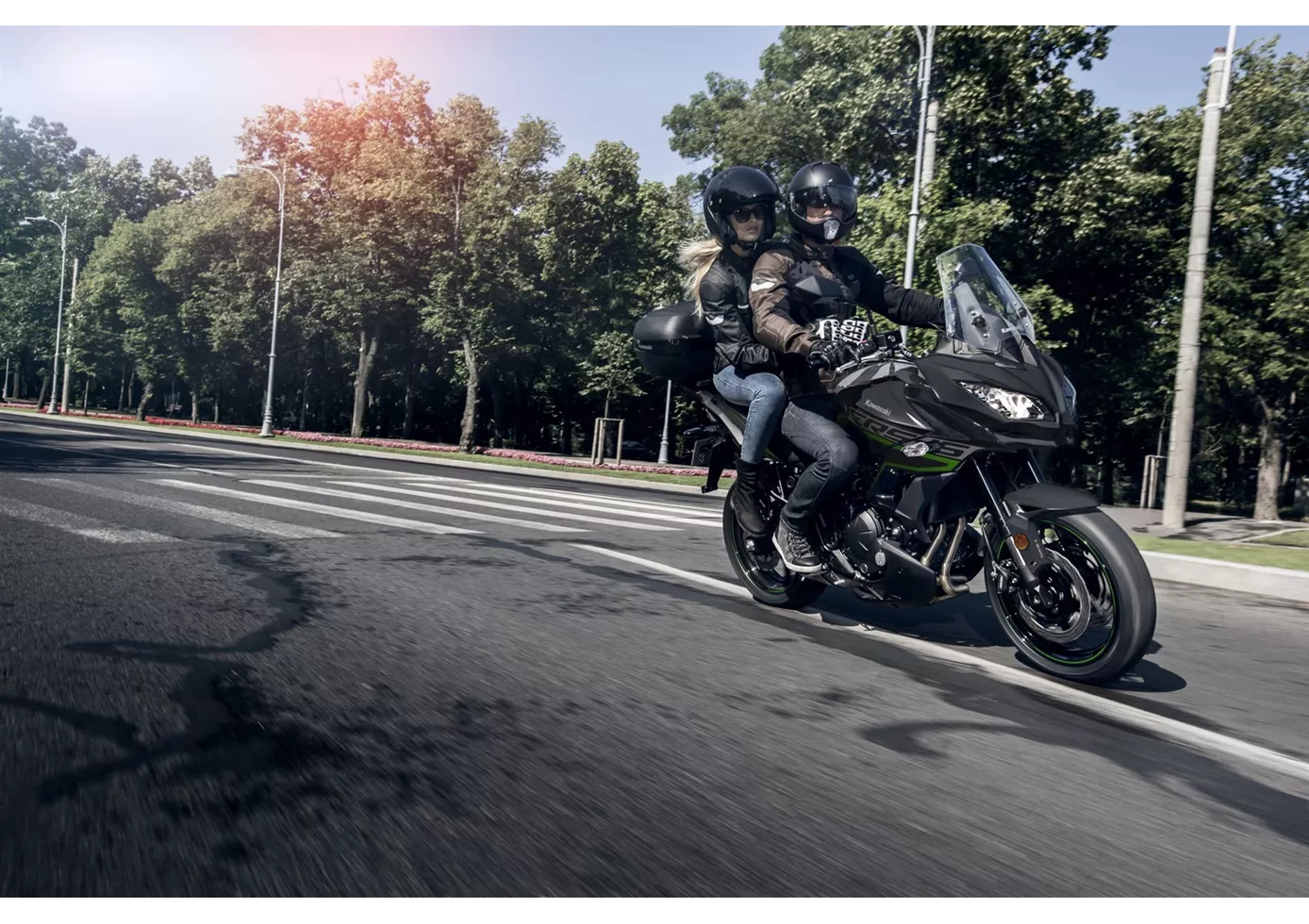
The 2019 model year Kawasaki Versys presented itself as a comfortable, stable yet lively touring machine. The motorbike is versatile and offers high utility value. It is a fully-fledged touring machine that is a pleasure to ride on extended tours. The bike offers a terrific price/performance ratio.
Price Comparison Avarage Market Price Suzuki V-Strom 650 vs Kawasaki Versys 650
There are a few key differences between a Suzuki V-Strom 650 2017 and a Kawasaki Versys 650 2020. In terms of price, the actual average price of a Suzuki V-Strom 650 2017 is about 13% higher. Compared to Kawasaki Versys 650 2020 there are less Suzuki V-Strom 650 2017 bikes available on the 1000PS.de Marketplace, specifically 4 compared to 11. It takes less time to sell a Suzuki V-Strom 650 with 89 days compared to 137 days for a Kawasaki Versys 650. Since model year 2005 1000PS.de editors have written 38 reviews for the Suzuki V-Strom 650 and 39 reviews for the Kawasaki Versys 650 since model year 2007. The first review for the Suzuki V-Strom 650 was published on 9/16/2003 and now has more than 4,000 views. This compares to more than 3,900 views for the first review on Kawasaki Versys 650 published on 7/25/2006.

